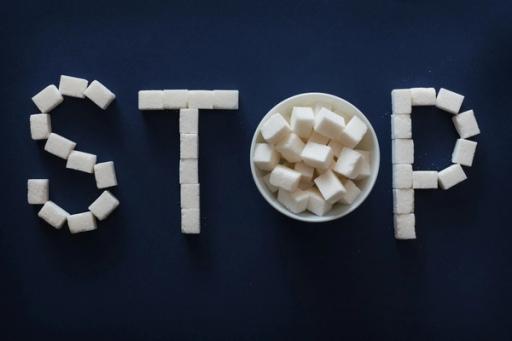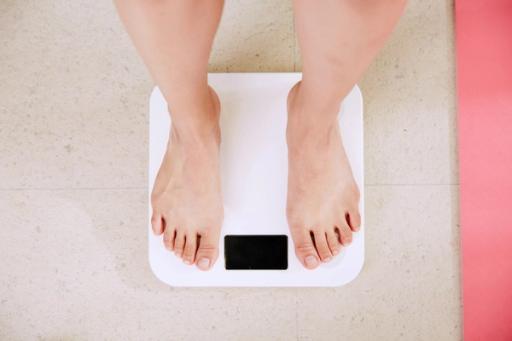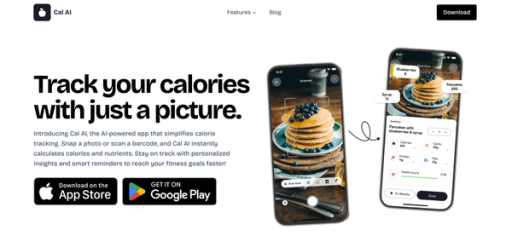
Staying active is crucial to any fitness plan because it helps you burn calories, build muscle, and improve your overall health. However, not all calories you burn help you reach your fitness goals. For instance, if you're trying to lose weight, you'll want to keep track of the calories you burn during exercise to help you create a more significant calorie deficit. On the other hand, if you're trying to gain muscle or improve your athletic performance, monitoring your calorie burn will help you determine how many calories you need to fuel your workouts and recovery. So, how do you keep track of calories burned? In this blog, we'll discuss how to keep track of calories burned so you can reach your fitness goals with consistency and accuracy.
Calorie tracker by Cal AI is the best app to track macros and for monitoring calories burned. It accurately estimates your calorie burn during exercise and helps you easily track your progress.

Calorie counting is a popular method for managing weight and nutrition, but it is only for some. Individual goals and preferences matter. Also, when calorie counting works, it's usually for short-term results, like losing weight fast for an upcoming event.
It can help get you back on track, but ultimately, you want to find a balanced way of eating that supports your overall health and enables you to reach your personal goals.
A calorie is a unit of measurement that describes how much energy a given food or drink has. The same unit of measurement is used to describe how much energy you exert in a day (calories burned). To lose weight, you must burn more calories than you consume; to gain weight, you must consume more calories than you burn.
If you're interested in changing your weight, you’ll need to create a calorie deficit or surplus to ensure you stay within your desired surplus or deficit, and you’ll need to keep track of the calories you eat and burn.
The calories you need daily vary based on age, sex, height, and activity level. That being said, calorie needs for adult men range from 2,000 to 3,200 a day, and adult women need 1,800 to 2,400 calories a day, according to the 2020-2025 Dietary Guidelines for Americans.
To maintain your current weight, consume approximately the same amount of calories your body uses daily, based on your BMR and calories used during physical activity. Consuming fewer calories than your body uses daily may lead to weight loss, as your body will use its stored fat for energy. Meanwhile, eating and drinking more calories than your body uses may lead to weight gain, as your body stores the excess energy as fat.
Weight management is simply a game of calories in and calories out. To lose weight, you must burn more calories than you consume; to gain weight, you must consume more calories than you burn. Say you want to lose 10 pounds over 10 weeks (one pound per week). One pound of body fat is equal to 3,500 calories.
Depending on body fat density and how your body composition changes over time, there is potential for variation among individuals. Based on the 3,500-calorie estimate, you must create a calorie deficit of 3,500 calories each week to lose that one pound.
You can do this in a few ways:
Calorie counting isn't for everyone, nor is any sort of food tracking or logging, for that matter. Some people just want to eat and enjoy food without worrying about its caloric value. Some people don't have the time or energy to count calories (that's probably most of us), and others have health goals that don't involve counting calories.
Calorie counting works when:
Calorie counting isn't the best method if:

Calorie tracking helps people align energy expenditure with their fitness goals. When you monitor calories burned during exercise, you can create a more effective workout plan tailored to your specific goals:
There are various ways to monitor this, including:
Accuracy can vary between methods, so it’s best to use averages over time instead of expecting exact numbers. Also, remember to combine tracking calories burned with calorie intake for a balanced fitness and weight management approach.
The first thing you must do is determine how many calories you need daily. Counting calories does you no good if you eat too few or too many. The absolute best way to decide on your daily calorie allowance is to work with a:
These people can consider this to create an ideal daily calorie number:
If you see a pro is off the table, you can use an online calorie calculator, like this one from Mayo Clinic, to find out. Most calorie calculators use the same formula, the Mifflin-St Jeor equation, which accounts for:
As the Mayo Clinic’s calorie calculator disclaimer says, other factors influence your daily calorie needs and these contribute, too:
Once you have your number, you can start counting your calories. To create a deficit, eat fewer calories than your maintenance number; to create a surplus, eat more. You can keep track in a pen-and-paper journal or use a calorie-counting app.
Counting the calories in packaged foods is easy: Look at the nutrition label and write down the calorie amount. Don't forget about serving sizes, though—if you eat two servings, double the calorie count on the label.
Tracking fresh foods is a little more complicated than monitoring packaged foods because there's typically no label. But it's easy to find calorie data online. You can search virtually any food on the FDA's FoodCentral database for complete nutrition information.
Most food-tracking apps have massive databases of foods, too, so don't let the lack of a nutrition label deter you from eating fresh foods.
Logging the calories in restaurant meals can be tricky if the restaurant isn't a chain. In 2018, the FDA mandated that all restaurants with more than 20 locations must disclose calorie information for all menu items, so it's easy enough if you're eating at a regional or national chain restaurant. Local restaurants aren't required to disclose calorie counts, but if you ask your server, they can find out.
Remember to count the calories in the beverages you drink throughout the day. Your drinks contribute to your daily calorie intake unless you consume nothing but plain water and zero-calorie drinks (including black coffee and tea without sweeteners or milk). Count the calories from the creamer in your:
Measuring the exact number of calories you burn can be difficult. There are a few ways to measure your calorie burn.
You can:
While calories benefit intentional weight loss or weight gain, they don't tell you about micronutrients. The quality of your diet is just as important as the number of calories you eat each day: Where your calories come from makes a big difference in your overall health. A calorie is more than a simple unit of measurement when assessing how foods influence your overall health. For instance, a 100-calorie serving of almonds affects your body much differently than 100 calories worth of a Twinkie. Almonds have fiber, protein, healthy fats, vitamins, and minerals, whereas a Twinkie contains mostly sugar and saturated fat. A handful of almonds will give you sustained energy; a Twinkie will probably cause your blood sugar to spike and crash—and those are only the short-term effects.
In the long term, almonds offer health benefits like blood sugar control and lower cholesterol levels. Many of the ingredients in Twinkies—sugar, high-fructose corn syrup, and hydrogenated oils, to name a few—have been associated with an increased risk of chronic diseases. The great thing is that filling your diet with fruits, vegetables, whole grains, lean protein, and healthy fats should naturally curb your calorie intake. You'll get full on fewer calories because nutritious foods are less calorie-dense than sugary, fatty, or processed foods.
Diet. Cutting calories and eating healthy will help you lose weight. Exercise alone probably won’t help you lose weight, but it will help you keep it off. To lose one pound a week, you should aim for a daily calorie deficit of 500 calories. This deficit can be achieved by reducing the calories you eat and increasing the calories you burn through physical activity. This adds up to 3,500 calories per week, the number of calories in about one pound of fat.
Several factors contribute to how quickly an individual burns calories, including:

Cal AI flattens the learning curve of calorie tracking with its advanced artificial intelligence technology. With Cal AI, you only have to take a picture of your meal, and the app will do the rest. Our app uses your phone's depth sensor and AI models to analyze food volume, identify ingredients, and instantly calculate content for:
With 90 percent accuracy on visible foods and multiple tracking options, we've made nutrition tracking effortless, such as:
Whether scanning a full meal or a quick snack, Cal AI gives you accurate nutritional information in under 15 seconds. Plus, our AI learns from your feedback, continuously improving its accuracy. Stay on track with personalized insights and smart reminders—Cal AI simplifies achieving your fitness goals. Today, with Cal AI’s AI calorie tracker, track your calories with your camera.
Lose It! simplifies calorie counting for weight loss. The app's premium features include:
It gives insights into your eating and behavior patterns. It also boasts robust tracking features beyond calories, such as:
Pros
Cons
Requires iOS 15 or higher and Android 5.0 or higher.
MyFitnessPal offers comprehensive calorie tracking to help you achieve your health goals. The app analyzes your nutrition intake, tracks your workouts, and provides reports that help you understand your eating habits.
MyFitnessPal also allows you to set specific goals for:
With this app, you can manage your weight over time and access its 24/7 support community—all while tracking your workouts and steps through its fitness tracking feature.
Pros
Cons
Pricey monthly subscription compared to the other apps on this list.
The YAZIO Calorie Counter & Diet app features:
Pros
Cons
Nutritionix Track offers several benefits for users looking to start calorie counting at the touch of a button. The app allows users to test its premium features through a generous two-month free trial to determine if it’s the right pick for you.
Through its Exercise + feature, you can track your calorie and macro goals, weight and weight progress, and even know how many calories you may have burned from exercise.
Pros
Cons
No lifetime membership is available.
Calory offers various tools to help users create and track their health and fitness goals. In addition to calorie counting, users can track their daily water intake and get a detailed look into their consumption of macronutrients like:
Calory also offers weekly, monthly, and yearly progress charts to help users visualize their progress.
Pros
Cons
Requires iOS 14.0 or higher or Android 8.0 or higher.
This app tracks and logs your calories and offers various features, from advice to diet-specific recipes. It’s also great if you have an Apple Watch, as its design is particularly optimized for the device.
This app makes logging food quick and easy, thanks to its built-in barcode scanner and robust food database.
Pros
Cons
Doesn’t provide suggested daily calorie intake.
The Calorie Counter by FatSecret offers various tools to guide users through their health or weight loss journey, including a food and exercise diary, community support, and detailed calorie and macronutrient intake reports.
Users who sign up for premium have access to dietitian-recommended meals that can be personalized based on diet preferences and calorie goals.
Pros
Cons
Water intake tracking is only available with a premium subscription.
Lifesum aims to help users build long-lasting healthy habits through calorie counting, meal planning, and fitness tracking. The app’s Life Score feature offers insight into eating patterns and physical activity levels and provides advice to help users improve their relationship with food.
As a plus, Lifesum’s meal plans and diets offer recipe ideas for various lifestyles and health goals.
Pros
Cons
Premium subscriptions are more expensive than others on our list.
According to the company, the Keto Diet Tracker by Carb Manager offers automatic meal plans and grocery lists personalized to a user’s food preferences and allergies, as well as a database of thousands of keto recipes. In addition to tracking calories, carbs, and other macronutrients, the app offers insight into health information such as:
The Carb Manager community can help users stay motivated, participate in challenges, and get tips on low-carb diet topics.
Pros
Cons
Device syncing is only available with the premium version.
Cronometer lets you easily keep track of your diet, exercise, and weight. It offers exact serving sizes and a helpful exercise database. You can select a customized profile based on higher-calorie needs if you’re pregnant or lactating. You can also tell Cronometer if you’re following a specific diet, such as:
This changes the macronutrient recommendations. The food diary is straightforward and user-friendly. Below it, you’ll find the total calories consumed for that day alongside a bar chart showing the breakdown of:
Cronometer is particularly useful for tracking micronutrients such as vitamins and minerals. The app offers a Gold upgrade with no ads, advanced analysis, and extra features.
Pros
Cons
Noom is a calorie counter and an app designed to help you lose weight and sustain weight loss using psychological approaches such as cognitive behavioral therapy. The app asks for specific information, such as your:
It uses this information to create a calorie budget—an estimate of the calories you should consume daily. It then uses your calorie budget to help you reach a calorie deficit. Noom encourages you to track the calories you consume daily and check your weight at least once daily.
It also helps you create diet plans without limiting or restricting certain food items. Instead, the app focuses on calories and nutrients to promote weight loss.
Pros
Cons
There is no free version.
Cal AI transforms calorie tracking with our cutting-edge AI technology. Just snap a photo of your meal, and we'll do the rest. Our app combines your phone's depth sensor with advanced AI models to:
With 90% accuracy on visible foods and multiple tracking options, we've made nutrition tracking effortless. Options include:
Gone are the days of tedious manual logging calorie-tracking apps. Whether scanning a full meal or a quick snack, Cal AI gives you accurate nutritional information in under 15 seconds. Plus, our AI learns from your feedback, continuously improving its accuracy.
Stay on track with personalized insights and brilliant reminders. Cal AI makes achieving your fitness goals simpler than ever. Track your calories with your camera using Cal AI’s calorie tracker today.